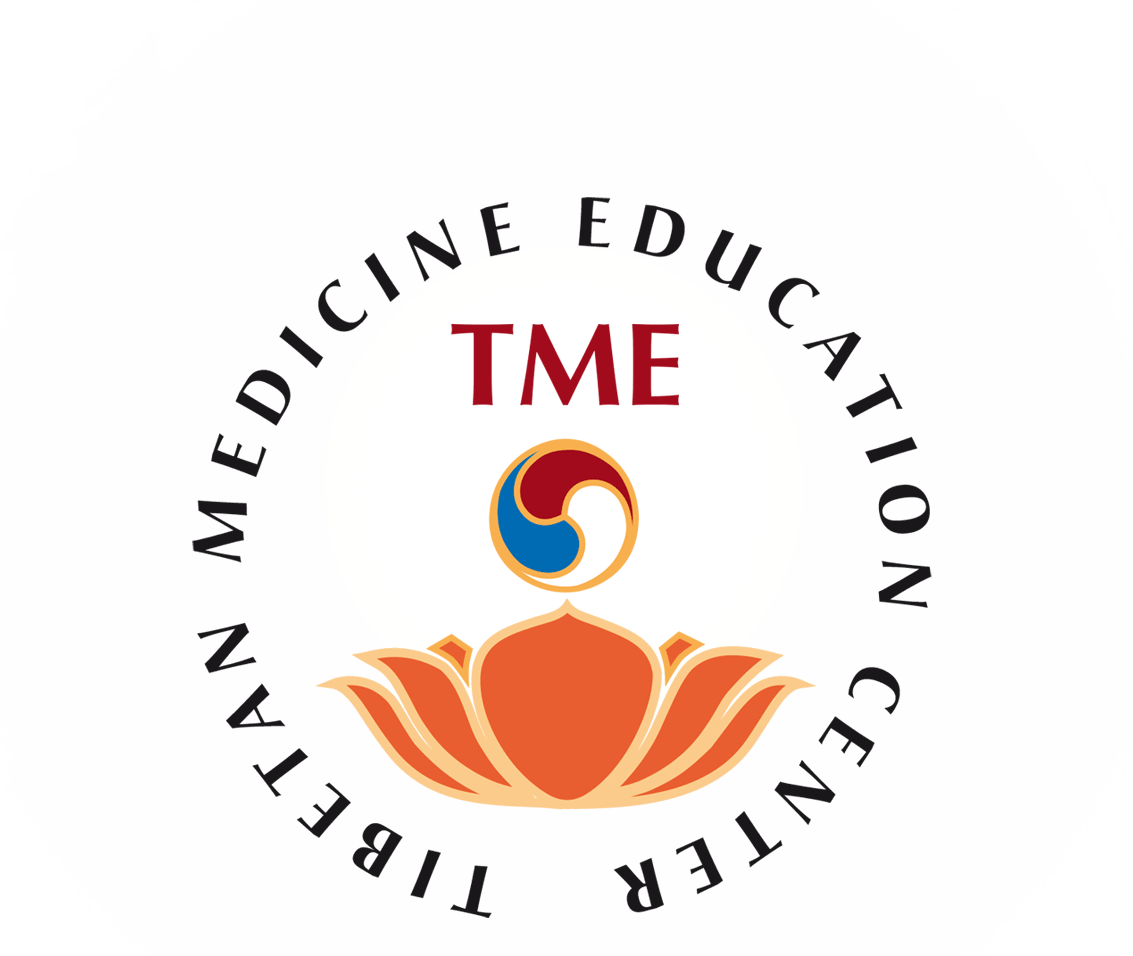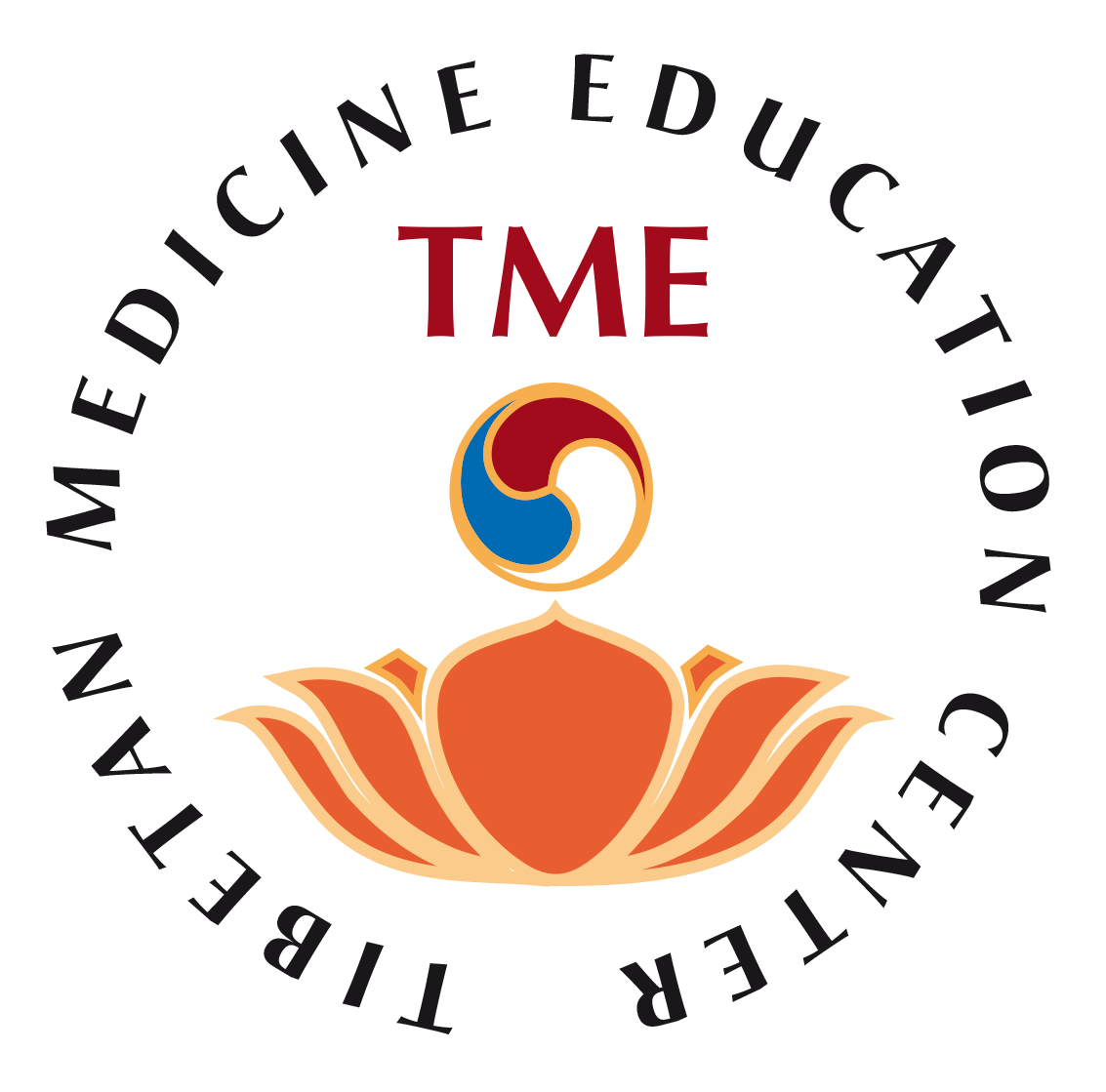The Three Humors
The Phlegm humor

The Phlegm humor is called ‘Badken’ in Tibetan, Bad means ‘earth‘, and kan means ‘water‘. It derives from the two elements of earth and water. Earth provides the quality of heaviness, and water provides the qualities of humidity and coldness. Both produce the qualities of coldness, wetness, binding and heaviness. The cool and wet nature of the Phlegm humor opposes the heat of Bile, while its qualities of heaviness and gentleness (smoothness) balance the roughness of the Wind humor. The Phlegm humor controls the Bile heat, infection and fever disorders.
Psychologically, the Phlegm humor is derived from gti-mug or closed-mindedness and it is comprised of two words: gti’ (pronounced ti), which means selfishness, and mug, which means unclear, foggy and confusion. It is hidden in the left channel of the core of the body and it gives psychic tranquility and a physical phlegmatic appearance. It is a masculine and lunar energy, which dominates the left side of the body. Phlegm humor has calm and slow characteristics.
There are three main sources of the Phlegm humor
- Phlegm humor energy which comes from one’s past life’s mental afflictions of selfishness and closed-mindedness (gti-mug),
- Phlegm derived from the energies of the earth and water elements by way of the parents’ energy and especially from the father.
- Phlegm energy received from nutrition throughout life to sustain it.
Phlegm humor locations and general functions
The Phlegm humor is generally located in the head, chest and above the diaphragm. It functions and rules the body fluids (water), and sustains the Phlegm humor energy in the body. The Phlegm humor is generally active in the chest, throat, lungs, brain, food essence, muscles, fat, bone marrow, reproductive fluids, feces, urine, and it also functions in the nose, tongue, spleen, stomach, kidney, bladder, and especially it dominates the undigested food area (stomach). It controls the Bile heat and balances Wind. It induces sleep and patience; it connects the joints and lubricates the body and its organs. It keeps the organs and skin smooth. It nourishes and rules physical growth, and it sustains the grey tissue. It rules the glands and the lymphatic systems and fluid circulation. It provides firmness and stability to the body and mind.
The seven characters of Phlegm humor
Phlegm humor has seven qualities: it is oily, cool, heavy, blunt, smooth, stable, and mucous-like (sticky, slippery). These qualities sustain the Phlegm humor’s strength and characters and nourish and develop the body and organs. They counterbalance the Bile and Wind qualities, and so bring equilibrium and harmony to health. An excess of Phlegm energy or a Phlegm power which dominates the other two humors will show the following symptoms:
Obesity caused by the fat and oily quality of Phlegm, a cooled digestive fire and the arising of metabolic disorders. Physically, the body becomes heavy and experiences heavy feelings; the body/mind actions become slow and blunt (slow action), the body skin becomes smooth and soft and the body, mind and diseases all have a stable character, with the increase of mucus and saliva and a sticky nature.
The five principal Phlegm branches (rTsawei-badken-lna)
Under the general Phlegm function, the Phlegm humor is divided into five types which regulate the particular functions of the body and its organs. They are called the ‘root or principal Phlegm‘ branches:
1. The Supporting Phlegm (Badken-rtenbyed, pronounced beken tenjed) is the principal branch of Phlegm.
Function
It resides in the chest, and sustains and supports the functions of the four other Phlegm branches. It controls the body fluids of the endocrine and lymphatic systems, distributes the water in the blood and body tissues, and rules thirst and salivation.
Malfunction
Malfunction of this Phlegm could manifest in loss of appetite, tension in the shoulders, pain in the back and front chest, acidity, the vomiting of sour liquids, chest malformations, etc.
2. The Decomposing Phlegm (Badken-myagbyed pronounced beken myagjed) is the saliva and gastric juice of the stomach.
Function
It resides in the stomach and functions in the mouth, esophagus, stomach, small intestine and colon to mix and decompose the food. It functions like water in the cooking of food. It breaks up and decomposes the food during the digestion. It helps absorb and assimilate nutrients and drinks, and sends them to the liver.
Malfunction
The malfunction of this Phlegm could manifest in all types of digestion difficulties or slow digestion and in the development of mal-absorption disorder, belching, and in the feeling of a hard or tensed stomach. In short, it becomes the cause of chronic Phlegm stomach and digestive disorders.
3. The Experiencing Phlegm (Badken-myongbyed, pronounced beken myongjed) resides in the tongue and governs taste.
Function
It governs the gustatory function (sensation of flavor of the six tastes), and the feelings of good or bad related to the other senses organs, too.
Malfunction
Malfunction of this Phlegm leads to loss of taste and appetite, little need of drinking, a cold tongue, pain in the lips, and hoarseness.
4. The Satisfying Phlegm (Badken-tshimbyed, pronounced beken tshimjed) is located in the head.
Function
It governs the feeling of satisfaction coming from the six sense consciousnesses. For example the like or dislike for music, etc.
Malfunction
Malfunction of this Phlegm manifests vertigo, drunken-like eyes (loss of control), and hearing disturbances, sneezing, an excess of nose mucus, catching frequent colds and a heavy feeling in the fontanel area.
This could become the cause of extreme or exaggerated thought, a fixated mind, or loss of interest which leads to the renouncement of everything and may turn into depression, anorexia, or bulimia, etc.
5. The Connecting Phlegm (Badken-‘byorbyed, pronounced beken-jorjed) resides in the joints.
Function
It lubricates the joints and keeps them firm. It controls stretching and the retraction of the limbs and body movements.
Malfunction
Malfunction of this Phlegm could easily manifest in rigidity of the hands and joints, pains in hands and legs, swollen joints and could develop into osteoarthritis, arthritis and various joint and ligament disorders originating from the Phlegm humor associated with inflammations.





